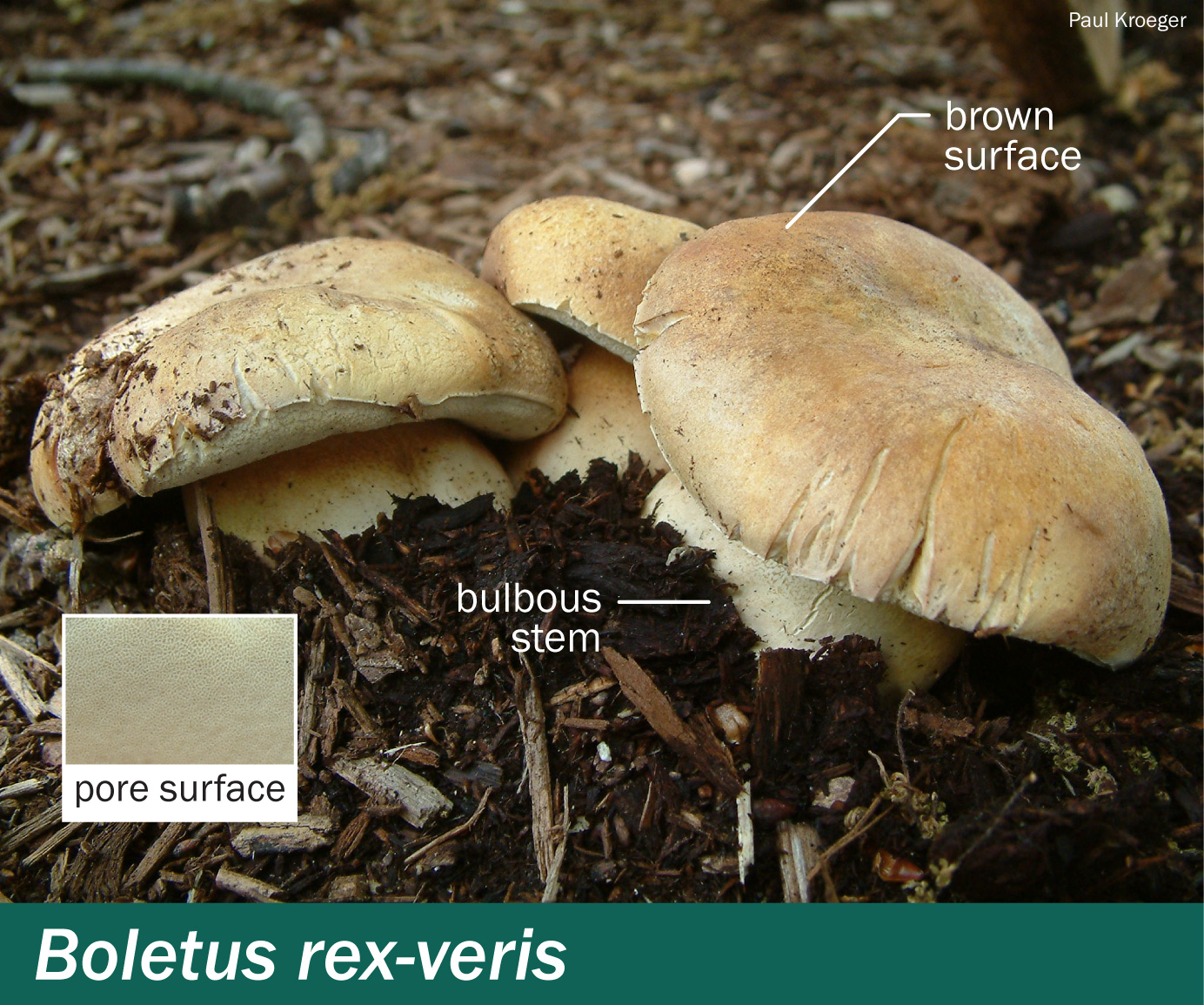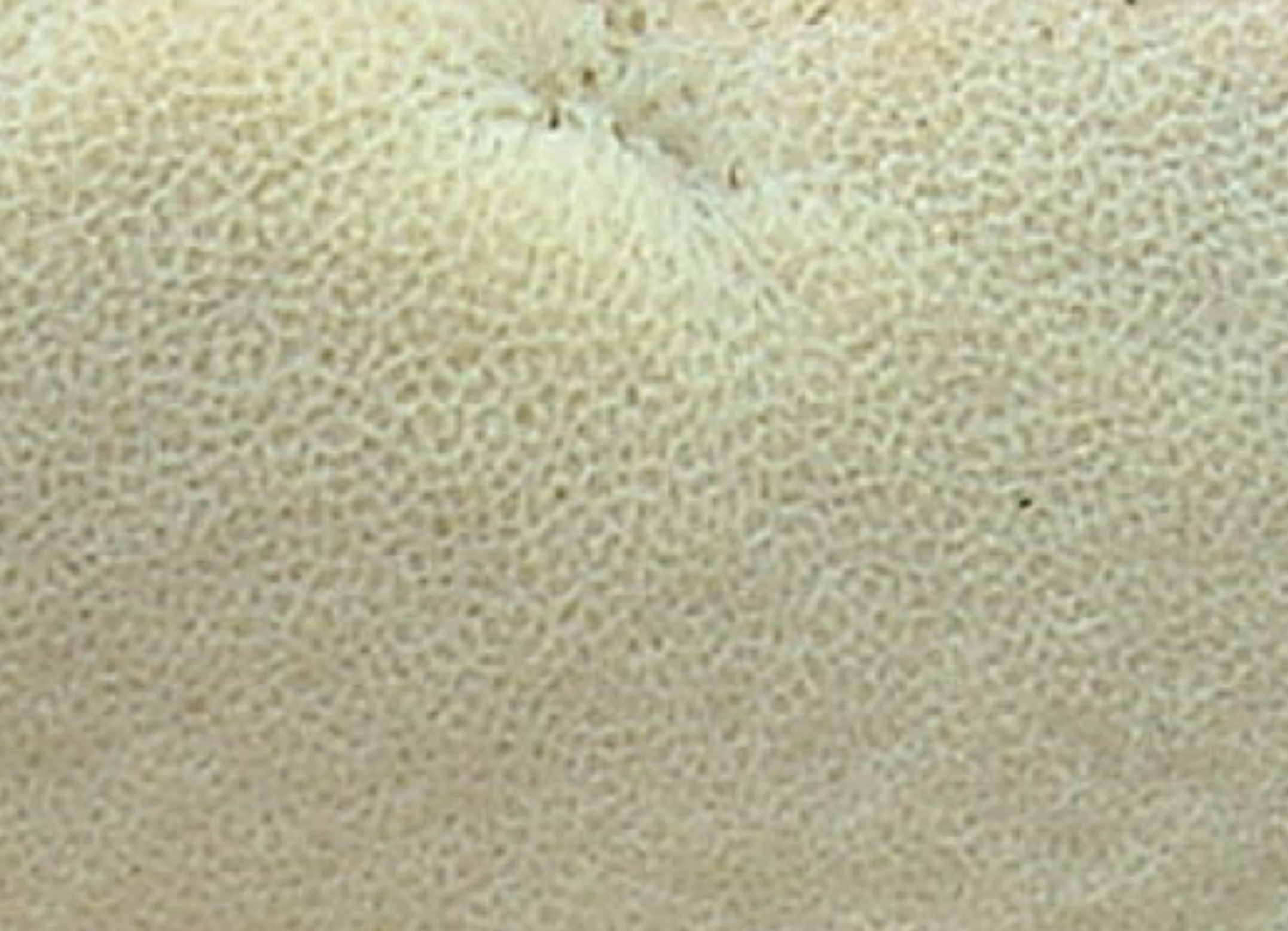Boletus rex-veris — Spring king bolete
Left image: Spring king bolete2. Right image: Pores at higher magnification. Photographs by Paul Kroeger.
Odour: Mild, pleasant.
Cap: 10–30 cm in diameter, broadly convex to almost flat. The colour is commonly reddish brown but it can also be dark brown, or more ochre-coloured when in sunlight, or paler when the cap is covered by soil. Surface may be dry or wet/slimy if weather is moist, smooth. Like the king bolete, the spring king may be partly buried in duff, looking like a bakery bun emerging from leaf litter.
Pores: On the under surface of the cap find minute pores. Pore surface is white when young and pores are stuffed with whitish cottony tissue; pores open and become yellowish with age. The pore surface does not change to blue when rubbed.
Stem: 5–20 cm long x 2.5–10 cm wide, bulbous when young, later more cylindrical, often with a tapering or pointed base. Surface white when young, to tan or pinkish coloured in upper half with age. With a fine white network of slightly raised ridges on the top half of the stem. Flesh in cap and stem white and firm.
Ring or veil: None.
Cup: None.
Spores: 14–18 x 4–5 µm, smooth, without a germ pore.
Habitat: In small groups on the ground, with pine (Pinus) and red fir (Abies magnifica). However, the specimen shown here grew in woodchips, under red oaks (Quercus rubra) on the coastal University of British Columbia campus in Vancouver, BC; ectomycorrhizal.
Geographic distribution1: In the western North American mountains from BC southwards into the Sierra Nevada in California, and east to Idaho. The species was only described in 2008; hence the extent of its geographical distribution is still being discovered.
Treatment: Contact your regional Poison Control Centre if you or someone you know is ill after eating boletes. Poison centres provide free, expert medical advice 24 hours a day, seven days a week. If possible, save the mushrooms or some of the leftover food containing the mushrooms to help confirm identification.
Poison Control:
British Columbia: 604-682-5050 or 1-800-567-8911.
United States (WA, OR, ID): 1-800-222-1222.


